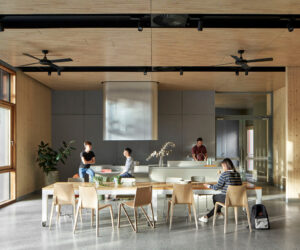Helen Lochhead gives building advice for bushfire prone zones
It is possible for residents to rebuild in bushfire affected zones, the Dean of UNSW Built Environment, Professor Helen Lochhead says. But the designs need to be well located and designed, in line with the Australian Standard, AS3959 Construction of buildings in bushfire-prone areas, and using best practice planning principles.
“In the majority of cases, we can design much better, more fire resistant, more sustainable and climate responsive houses, than what we are doing today,” Professor Lochhead says.
The Dean’s comments come after more than 800 homes were lost in the recent bushfires on the NSW south coast. Urban planners and architects have warned that not everywhere may be suitable for reconstruction because of the elevated risk in a changing climate.
The Dean says one of the first considerations in rebuilding is assessing the suitability of the site.
“There are locations where it’s probably not appropriate to rebuild,” Professor Lochhead says. “For example, if your home is in a remote location, with one road in, surrounded by bush and without any support infrastructure, or any potential for a fire break, that’s obviously a very vulnerable location to rebuild.”
“On the other hand, more effective solutions may require people working together. If you’re part of a settlement that was affected, communities can and should be part of the future planning and decision-making process so investment and reconstruction benefits the broader community. For example, it may be possible to build back safer more community infrastructure and put in fire breaks in public spaces to protect housing against future fire travel in the future.”
Professor Lochhead says people planning to rebuild should include a range of considerations, such as an adequate clearing around the house, self-cleaning gutters, and fire resistant decking on verandahs. The underside of buildings should be enclosed so embers don’t get trapped underneath the floor, and in more isolated areas there should ideally be adequate stored water, whether tanks, pools, ponds or dams, to fight fires if they do occur.
“[Other considerations include] using fire resistant materials. Non-flammable materials such as masonry, brickwork or rammed earth, and concrete as opposed to timber. This doesn’t mean you can’t use timber, but you might use it on the inside rather than the outside of buildings in these of locations.”
Professor Lochhead says these design considerations are more sustainable and cost effective in the long term and many architects are already onboard and designing this way in fire-prone areas.
“We’re not promoting buildings that are beyond the reach of the average person. We’re just talking about designing sensibly, sustainably and for the long term, acknowledging the climate and environment which we live in.”
Professor Lochhead is also President of the Australian Institute of Architects which has provided free access to their acumen practice notes, a resource base for building in bushfire prone zones.
The Institute is also providing pro bono architectural services for bushfire affected homeowners.



